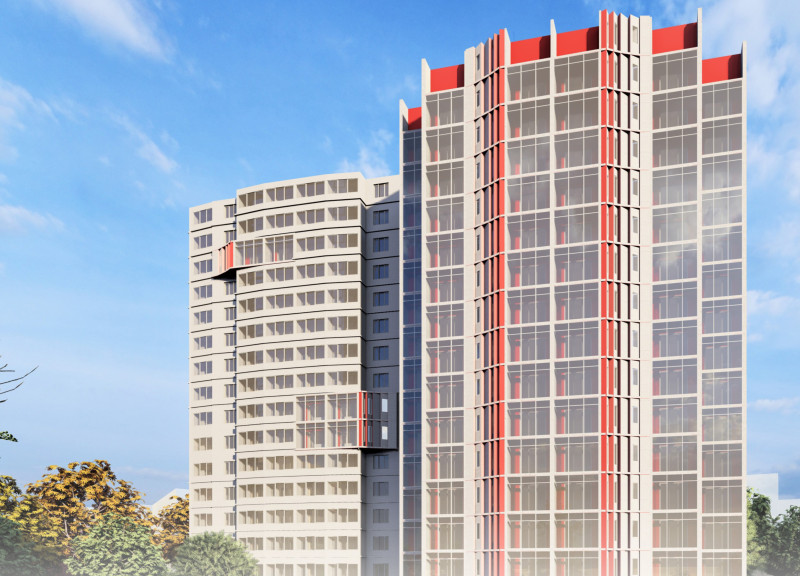5 key facts about this project
This architectural project features a robust yet elegant facade that reflects the surrounding landscape. The thoughtful integration of materials speaks to a commitment to sustainability and responsiveness to local climate conditions. Warm-hued concrete forms the foundational element of the structure, providing durability and a tactile quality that contrasts beautifully with expansive glazed areas. The use of glass allows natural light to permeate the interiors while offering panoramic views of the surrounding environment, establishing a connection between the inside and outside.
The layout of the project is designed to promote flexibility and adaptability. Open-plan spaces facilitate a variety of functions, from social gatherings to professional meetings, catering to diverse needs. The arrangement encourages a seamless flow from one area to another, allowing occupants to engage with their surroundings. This deliberate spatial organization underscores the importance of user experience in the architectural design, where each element is purposefully aligned with the overall function of the project.
Unique design approaches have been employed throughout the building, including the integration of green roofs and sustainable landscaping, which not only enhance the aesthetic quality of the project but also promote biodiversity. This commitment to environmental stewardship is further illustrated by the selection of locally sourced materials, which minimizes the carbon footprint associated with transportation and supports the local economy.
Attention to detail is evident in various architectural elements, such as the custom joinery and fixtures that reflect a high level of craftsmanship. The interior spaces utilize natural wood finishes, contributing warmth and texture while creating an inviting atmosphere. Careful consideration has been given to acoustic design, ensuring that spaces remain conducive to conversation and collaboration without compromising privacy.
Innovative technological solutions are seamlessly integrated into the architecture, with smart building technologies enhancing user comfort while optimizing energy efficiency. The project employs advanced climate control systems, ensuring that the environmental conditions are conducive to productivity. This integration of technology reflects a forward-thinking approach to design, striving to create environments that adapt to the needs of their occupants while being mindful of resource consumption.
This architectural project encapsulates a progressive vision that prioritizes functionality, sustainability, and community interaction. The careful blend of aesthetic and practical elements signifies a holistic approach to architecture that resonates with the local culture and enhances the social fabric of the area. For those interested in delving deeper into the nuances of the design, exploring the architectural plans, sections, and design ideas will provide valuable insights into how these elements converge to shape the overall experience of the space. By examining the architectural details presented, readers can gain a comprehensive understanding of the project and its significance within the context of contemporary architecture.


























